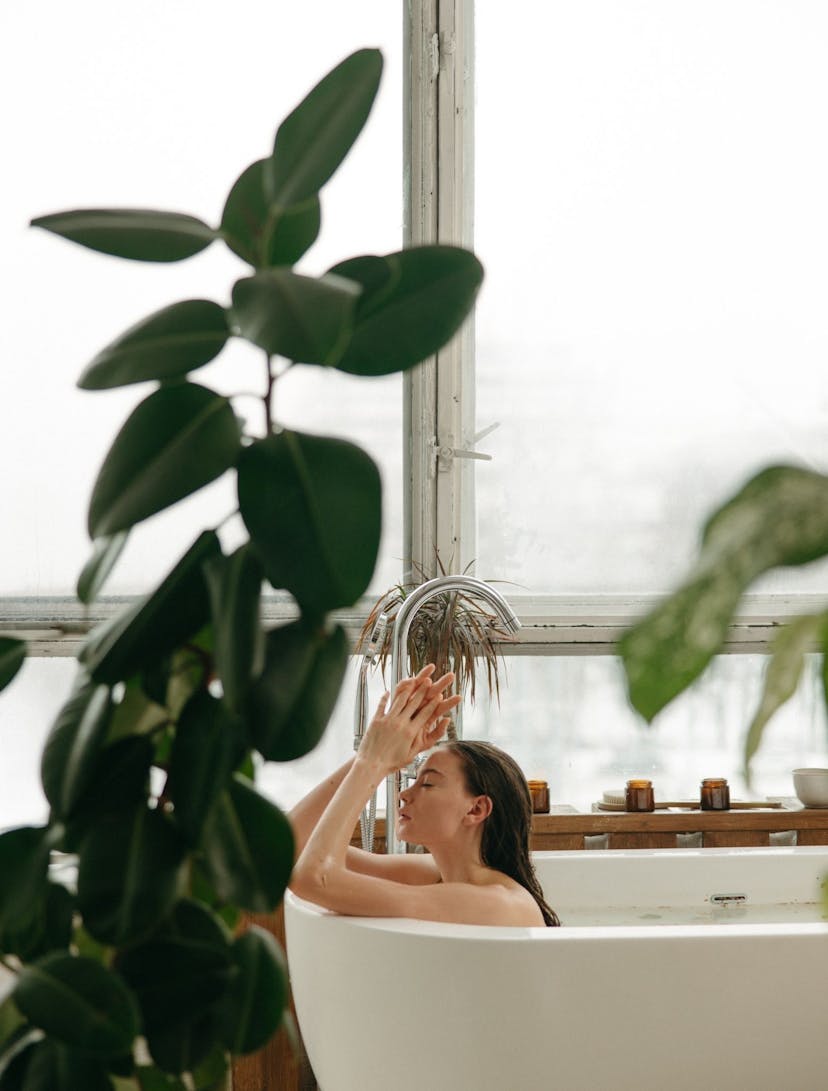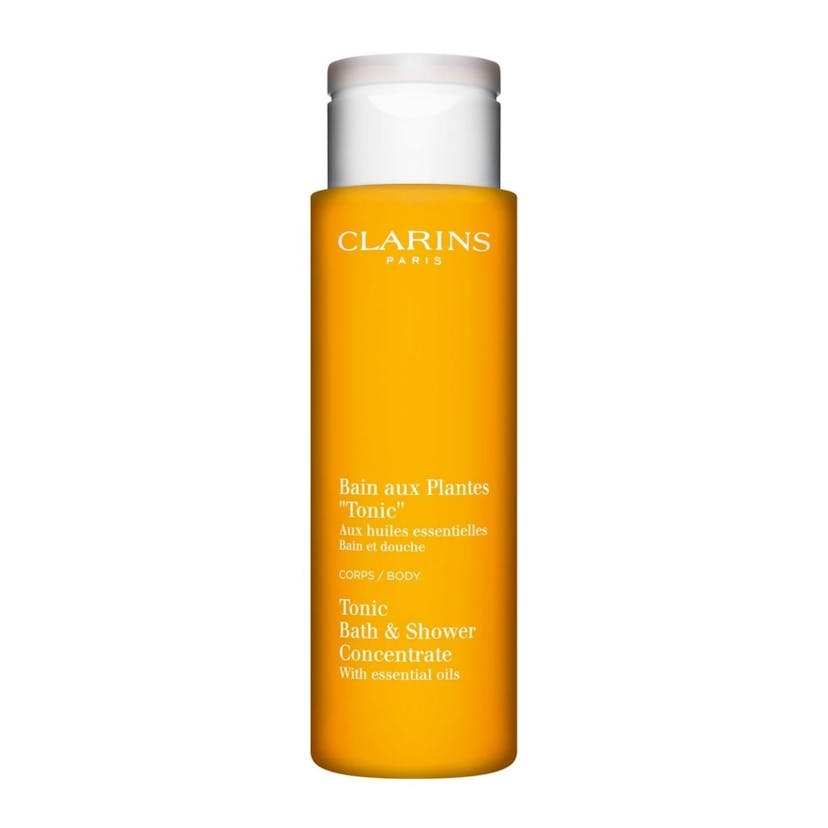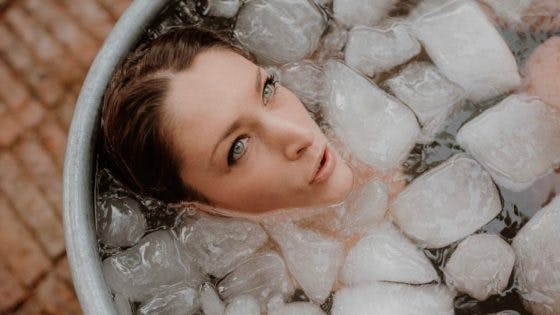The Art Of Bathing: Cold Plunges, Hot Baths & Everything-In-Between
5 minutes read
In this age of ‘bathfluence’ where celebrities, influencers and even your best friends publicly share their bath regimens, we’re constantly faced with inspo of upgrading our bath games in hopes of effectively cleaning off a day’s stress.
For centuries, people have been using the ‘art of bathing’ (clinically referred to as water therapy or hydrotherapy) to reap the healing properties of hot and icy water to soothe sore muscles and reduce stress and depression, among other benefits.
Baths, in general, can be meditative and a perfect pre-slumber routine. Add some bath salts, play your fave music playlist, and light some aromatherapeutic candles – and voilà, you’re all set.
“Building power of the mind with water therapy [cold, hot and everything-in-between] will improve your mental, emotional, and psychological wellness,” Charlène Gisèle Bourliout, London-based Certified Health and Business Coach and Professional Biohacker, tells Beauty Daily.

Hot Bath
Did you know that hot baths can bring about certain health benefits common to aerobic exercise?
Research suggests heat therapies, including time in a hot tub, can raise core body temperature and improve blood flow, which can lower blood pressure, control blood sugar, and reduce inflammation.
Blood pressure may rise immediately after entering the warm water, it drops off quite quickly shortly thereafter. Cleveland Clinic cautions if you choose to use a hot tub especially if you are a heart patient to engage in the activity for only brief periods of time.
Researchers at the University of Freiburg in Germany found that participants with depression reported a boost in mood after soaking in a 40C bath for 30 minutes.
Japanese people are known for their love for onsen or volcanic hot springs, which have proven health and peaceful meditation benefits. Japanese hot springs are kept at a sizzling 42C.
A study from Japan followed more than 30,000 people for about 20 years. It revealed that those who took baths every day had a 28% lower risk of cardiovascular disease and a 26% lower risk of stroke.
Benefits of a hot bath
- Elevate your mood
- Relieve muscle tension
- Reduce the risk of a heart attack
- Boost immune system
- Improve blood sugar control
- Lower your blood pressure
- Burn calories
- Protect you from illness and infection
- Open our pores and flush out the dirt and toxins that build up throughout the day
How to take a hot bath
- Check the temperature. Make sure hot tub water temperatures don’t exceed 104F. A temperature of 100F is considered safe for a healthy adult.
- Soak for no more than one hour. According to a recent study, one hour of soaking in a hot bath (at 104F) burned as many calories as half an hour of walking.
- Don’t forget to hydrate. Drink several glasses of water afterwards to replenish fluids lost from sweating.
- Add some essential oils to your bath. Beauty Daily recommends using either lemon-ginger-infused Tonic Bath & Shower Concentrate in the morning or the calming chamomile and basil Relax Bath & Shower Concentrate at night.

Pour a few drops of concentrate into the bathtub, then run water. Don’t forget to inhale the uplifting aroma as it permeates the steam in the bath too.
Cold Bath
Cold baths have made some traction, thanks to ice baths throughout our Insta feeds and the rise of practitioners like Wim Hoff and his cold therapy.
Experts swear by its wellness benefits: a blast of freezing water for just a few minutes a day can improve focus, increase energy, and reduce stress.
Cold baths usually involve frigid temperatures that can take a while to get used to. It includes ice baths, brisk daily showers, outdoor swims, and cold water immersion therapy sessions.
Research suggests that regularly plunging yourself into freezing water may alter how you respond to stress, too. One study found that repeated cold-water immersion over a period may reduce the adrenaline-driven response to other stressors. Another study found that cold exposure boosts the production of norepinephrine, a hormone and neurotransmitter associated with mood, focus and attention span.
However, you may have to endure discomfort to reap its benefits and that begins when the water temperature plummets to 60F.
How to take a cold bath
Bourliout says: “You want to get the water cold enough to where you are uncomfortable. If you feel like you want to jump straight out, that is a good temperature. Ideally, you want the cold water to be touching or running on the back of your neck and top of your shoulders, as this is where most of our brown fat cells are located.”
Benefits of a cold bath
“Cold bathing is an incredible tool and ‘primal’ experience I like to use with my clients to improve their overall performance, uplift their mood, boost their ‘beauty confidence’, metabolism and strengthen their mind-body-breathing connection,” Bourliout adds.
- Ease sore and aching muscles
- Help your central nervous system
- Improved levels of cholesterol and blood sugar
- Boost metabolism
- Lose weight
- Decrease levels of inflammation
- More energy
- Better sleep
- Improved focus
- Stronger willpower
- Reduced stress levels
- Strengthened immune system
- Faster post-workout recovery
- More creative mind
When you have developed the right resistance, try an ice bath.
Ice baths are a type of cold water therapy that involves immersing oneself in a container of icy water for a brief period.
Pro Tip: Bourliout says that to safely become more resilient to cold bathing you must progressively work your way up towards three minutes and build up to doing it three times a week until you can bathe in the cold daily. It is also advised to be supervised by a trained professional to go into your first ‘ice bath’.
Contrast Bath
When you have built the resistance from the two, you might be ready to mix both and try a contrast bath?
Depending on your tolerance for extreme temperatures, what does immersing your body first in hot water and then in an icy cold bath sound like?
A contrast bath is a series of brief, repeated immersions in water, alternating between warm and cold temperatures.
Benefits of Contrast Bath
- Reduced fatigue
- Decreased muscle soreness
- Decreased swelling
People who do contrast bath therapy are usually guided by a professional (physical therapist or athletic trainer). So doing this DIY or on your own should be taken with caution. There are some risks for people with certain conditions. Be sure to talk to your doctor before you try this intervention on your own.
Read next: Home Spa: How To Have The Ultimate Spa Day At Home
Supplied cover image: Charlène Gisèle Bourliout in her ice bath session taken by Ana Hinojosa.
Sign up for our newsletter
We will keep you in the loop for special offers, exclusive gifts and product news.

